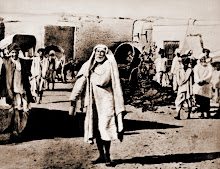
The Risk Factors for Diabetes in Indians Are:
Age— Indians develop diabetes at a very young age, at least 10 to 15 years earlier than the western population. An early occurrence of diabetes gives ample time for development of the chronic complications of diabetes. The incidence of diabetes increases with age. In India, the life span has increased, hence more number of people with diabetes are being detected.
Family History— The prevalence of diabetes increases with a family history of diabetes. The risk of a child developing diabetes with a parental history increases above 50 per cent. A high incidence of diabetes is seen among the first degree relatives. Indians have a high genetic risk for diabetes as observed in Asian Indians who have migrated to other countries. They have been found to have a higher rate of diabetes as compared to the local population .
Central Obesity— The association of obesity with Type II Diabetes is well known. Even with an acceptable body weight range, weight gain could increase the risk of diabetes . An excess of body fat specially concentrated within the abdomen has an increased risk of diabetes. The cut-off limit for waist circumference for Indians have been recommended to be 90 cm for males and 80 cm for females. Abdominal obesity is defined by waist circumference above these limits.
Physical Inactivity and Sedentary Living— There is enough evidence to demonstrate that physical inactivity as a independent factor for the development of type II diabetes. The availability of motorised transport and a shift in occupations combined with the plethora of television programmes has reduced the physical activity in all groups of populations.
Insulin Resistance— Asian Indians have been found to be more insulin resistant as compared to the white population. They have a higher level of insulin to achieve the same the blood glucose control. A cluster of factors consisting of abnormal fats (Dyslipidemia), high blood pressure, obesity, and abnormal glucose levels known as metabolic syndrome is highly prevalent in Asian Indians.
Urbanisation—The developing countries like India are undergoing rapid urbanisation . Urbanisation is associated with increasing obesity, decreasing physical activity due to changes in lifestyle, diet and a change from manual work to less physical occupations.
Stress— The impact of stress both physical and mental along with lifestyle changes has a strong effect of increasing incidence of type II Diabetes amongst persons is a strong genetic background.



